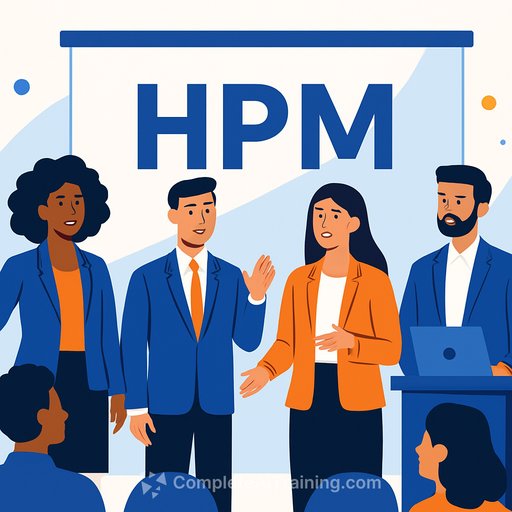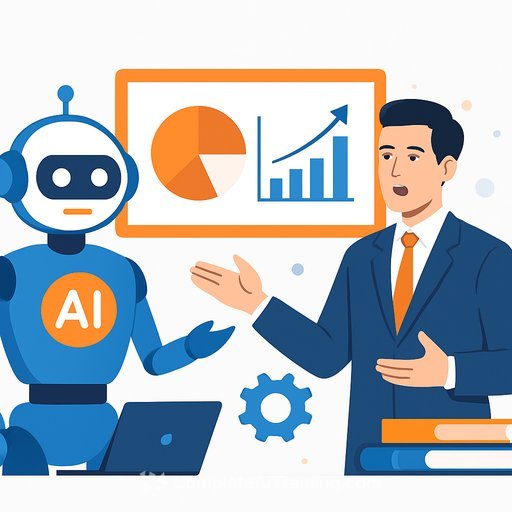AI and SaaS Are Rewriting HR: What ISG's 2025 Survey Means for Your Next Move
A new global report from ISG signals a clear shift: HR tech is moving decisively to SaaS and practical AI. Budgets, operating models, and expectations have all scaled up. If you're leading HR, this is your window to translate tools into outcomes-not more tech debt.
The signal in the data
- AI budgets for HR will average $1.6 million in 2026-a 10x jump since 2023.
- More than two-thirds of enterprises rank AI adoption among their top three HR priorities.
- 69% of organizations already run HR on SaaS or hybrid cloud; by end of 2027, that rises to 83% (with half on SaaS only).
- Only 52% see measurable value from HR tech today. Integrated HR/finance/workforce planning platforms report roughly 2x ROI vs siloed stacks.
Translation: investment is there, but outcomes depend on integration, data quality, and operating model changes-not point solutions.
Where AI is working right now
- AI-assisted job postings and content creation
- Automated onboarding workflows
These use cases show 10-15% productivity gains due to high data availability and lower risk. More advanced areas-like workforce planning and payroll-are possible but harder and require stronger controls, cleaner data, and tighter integration.
Why value is stuck at 52%
- Budget constraints vs. unclear benefit narratives
- Legacy complexity that slows change
- Gaps in data accuracy, consistency, and access
- Fragmented tools that don't plug into a core platform
The pattern is consistent: integrated platforms plus shared, trustworthy data drive impact; isolated tools don't.
A practical playbook for the next 12-18 months
- Define 3-5 outcomes: time-to-hire, hiring manager NPS, payroll accuracy, case resolution time, headcount forecast variance.
- Fund a focused AI portfolio: start with job postings, offer letters, onboarding comms, HR knowledge search, tier-0 support. Scale once KPIs move.
- Fix the data: standardize job architectures, locations, cost centers; implement data owners; schedule monthly data quality checks.
- Integrate to your core: connect HR, payroll, finance, and planning. Avoid add-ons that live outside process flows.
- Redesign service delivery: expand shared services, clarify what goes to outsourcers, and add AI-enabled self-service and chat where it reduces contact volume.
- Change management: train recruiters, HRBPs, and payroll analysts on new workflows. Treat it like a product launch, not a memo.
- Security and privacy: apply role-based access, PII masking, and audit trails. Align with recognized frameworks.
- ROI discipline: baseline current performance, measure monthly, and stop or scale based on evidence.
- Vendor governance: lock SLAs, model drift policies, upgrade cadence, and exit terms into contracts.
Sourcing and service delivery: expect change
84% of organizations plan sourcing changes in the next two years. That includes shifting work across outsourcing partners, internal shared services, and AI-enabled support.
- Outsource: high-volume, rules-driven processes with stable SLAs (e.g., tier-1 cases, data entry).
- Shared services: tier-2/3 expertise and exceptions that benefit from standard work and knowledge ops.
- AI-enabled support: tier-0 search and chat for policies, documents, and status-deflect before tickets form.
Security, integration, and cost-your top filters
- Security & privacy first: require clear data handling, auditability, and incident response. Consider guidance like the NIST AI Risk Management Framework.
- Integrate to a core platform: prioritize vendors that plug into your HR suite and finance/planning stack.
- Total cost of ownership: include implementation, integration, training, and change costs-not just licenses.
Benchmarks to share with finance
- $1.6M average HR AI budget expected in 2026 (10x since 2023).
- 10-15% productivity gains in content-heavy and onboarding processes.
- Integrated platforms are reporting ~2x ROI vs siloed tools.
- By 2027, 83% plan SaaS/hybrid cloud, with ~50% SaaS-only cores.
Upskill the HR team where it matters
Your HR ops, TA, payroll, and analytics leads need practical AI skills tied to daily work. Curate short-format courses and certifications that reinforce use cases, data quality practices, and prompt design standards.
What to do this quarter
- Pick three AI use cases tied to measurable outcomes; set baselines.
- Stand up an HR data council with owners for core objects (people, jobs, orgs).
- Map integrations from HR to payroll, finance, and planning; close the top two gaps.
- Pilot AI-assisted job postings and onboarding comms; measure cycle time and quality.
- Update your HR service model to add tier-0 AI support and clear escalation paths.
- Review security controls against your policies and a recognized framework.
The bottom line
The market is all-in on SaaS cores and practical AI. The winners won't be the ones with the longest tool list-they'll be the ones who tie a few high-yield use cases to clean data, integrated platforms, tight service delivery, and hard metrics.
Your membership also unlocks:






